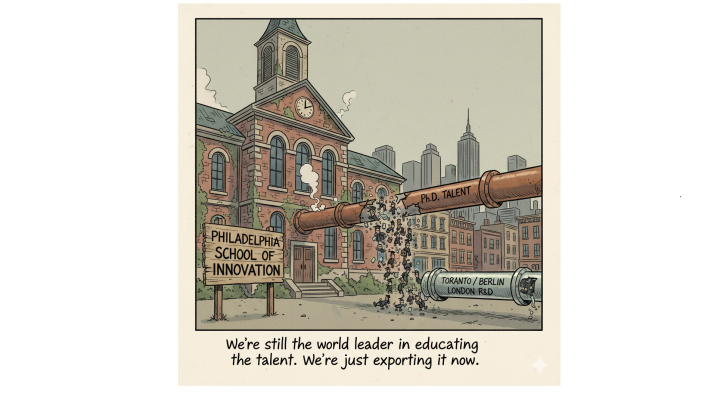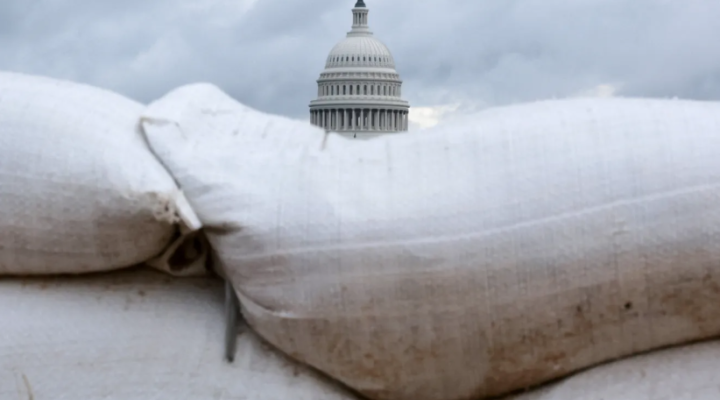SEPTA’s Funding Crisis: What Happened, Why It Matters, and What Can Be Done

The Big Picture
Greater Philadelphia’s transit system hit a fiscal wall over the summer. As federal COVID relief expired and ridership remained below pre-pandemic levels, SEPTA faced a large operating gap heading into FY2026. With the state budget unfinished, the agency began cutting service in late August and planned a September fare hike to balance the books. A lawsuit quickly challenged those moves, and a judge temporarily halted further changes beyond the initial August reductions. The result: a standoff in two arenas—the courtroom and Harrisburg—that will determine whether transit service stabilizes or shrinks further.
Why This Matters (in plain terms)
Transit is economic infrastructure. It moves workers to jobs, students to school, patients to care, and customers to small businesses. When service becomes less frequent or more expensive, people lose time and money—and some lose access altogether. In Philadelphia, the August reductions fell heaviest on city bus, subway, and trolley riders, who are more likely to be low-income and people of color. That raises equity concerns and risks a familiar pattern: cuts make service less useful, ridership drops, revenue falls, and deeper cuts follow—a “death spiral” that can be hard to reverse. About 52,000 public-school students rely on SEPTA daily, so service gaps also ripple into attendance and family routines.
What Changed in August
- Service cuts took effect on August 24. SEPTA implemented an approximately 20% reduction, eliminating 32 bus routes, shortening 16 others, thinning trips on multiple lines, and canceling special-event trains. These reductions remain in effect.
- A scheduled fare hike was paused. On August 29, a Philadelphia judge issued a temporary injunction blocking the upcoming September 1 fare increase and an additional round of cuts (including a planned 20% Regional Rail reduction in early September). The order did not undo the August 24 changes already in place. A follow-up hearing was set for September 4.
Where Things Stand (early September 2025)
- Service today: Riders are living with the August 24 reductions—longer waits, longer walks to fewer stops, and more transfers on affected trips. Many of the eliminated lines served neighborhood-scale connectivity that matters most to people without cars.
- Fares today: The court order paused the fare hike. SEPTA began reversing already-processed pass changes and signaled it would address any differences owed to riders pending the court’s decision.
- What’s next: The length of the injunction—and the pace of any restorations—depend on court rulings and whether Harrisburg finalizes a budget package with operating funds.
What’s Driving the Crisis (and a couple of definitions)
Operating budget (what keeps service running): day-to-day costs like operator wages, power/fuel, parts, and cleaning. Capital budget (what buys/repairs assets): long-lived items like vehicles, tracks, and stations. The current crisis is primarily operating—plugging the monthly hole that keeps buses and trains moving.
Three forces pushed SEPTA to the brink:
- Ridership and revenue lag. Even with recovery, ridership is around ~80% of pre-COVID levels, so fares bring in less money than they used to.
- Costs rose. Inflation in fuel, electricity, parts, and labor raised the cost of providing each trip in 2023–2025.
- Federal relief ended. One-time aid that covered pandemic shortfalls is gone, leaving a projected $213M FY2026 operating deficit that internal belt-tightening cannot solve.
Underneath those pressures is a structural funding problem: SEPTA relies heavily on annual state appropriations and comparatively small local contributions, leaving the region vulnerable to political delays in Harrisburg. In the current budget, Philadelphia contributed $135M and the four suburban counties under $40M combined—under 10% of operating revenue—far lower than peer regions with dedicated local taxes for transit.
The Lawsuit (what it argues and what the judge did)
Plaintiffs say the August cuts disproportionately burden low-income residents and communities of color, violating civil-rights protections. They also argue SEPTA moved too quickly without adequate analysis of disparate impacts or alternatives. On August 29, the judge issued a temporary injunction stopping the next wave of cuts and the September 1 fare hike while the court reviews the merits; she did not unwind the August 24 cuts, citing near-term operational disruption. A hearing was set for September 4 to determine whether to extend or modify the injunction.
What Could Be Done
Near-Term Stabilizers (keep the wheels turning while the budget lands)
- Bridge operating funds from the state and/or local partners—explicitly temporary—paired with a legal/legislative commitment to bring on recurring revenue within a defined timeline. Using capital dollars to backfill operations should be avoided; it fixes today by creating tomorrow’s maintenance crisis.
- Equity-first restorations. If limited dollars allow limited reversals, start with student bell-time reliability and high-need neighborhood routes that lost all-day frequency or stops. This prevents the steepest ridership attrition and keeps the system useful for those with the fewest alternatives.
Structural Fixes (make the system sustainable by design)
- Dedicated regional revenues. Peers demonstrate that systems are most stable when a portion of broad-based taxes (e.g., payroll or sales) is earmarked for transit operations—money that doesn’t require a fresh political deal every year. New York’s MTA, for example, now draws ~40% of operating dollars from such dedicated taxes alongside fares and tolls.
- Predictable local cost-sharing. Many regions require municipalities served by transit to contribute via formulas (“local assessments”), aligning funding with benefits and creating shared accountability for service outcomes. Boston’s MBTA model is a notable example.
- Plan for lower farebox recovery—rebuild service quality to rebuild demand. Across major systems, the share of costs covered by fares has fallen since 2019. Viable plans assume a lower near-term fare share (≈20% for many agencies) while investing in on-time performance, safety, and cleanliness to earn riders back.
Leading Indicators to Track (month-to-month)
- Harrisburg package design. Does the final deal combine a near-term bridge with a clear on-ramp to dedicated recurring revenue? Signal of success: a timeline and mechanism that avoid annual brinkmanship.
- Court orders. Does the injunction get extended, narrowed, or lifted—especially for student access windows and neighborhood lifelines? This will shape the near-term service map even before budget fixes arrive.
- Access for vulnerable riders. Restored stops/routes in low-income areas; reliability at school bell times; late-evening service for shift workers—each is a bellwether for equity and future ridership.
- Ridership + reliability trend. Watch bus/subway/trolley ridership, Regional Rail on-time performance, and headway adherence; improvement here is both a symptom and a cause of recovery.
- Local cost-sharing momentum. MOUs or enabling legislation for municipal or county participation beyond one-offs (e.g., formulas, assessments) show the region is moving from ad-hoc funding to a rules-based system.
Scenarios: What the Next 6–12 Months Could Look Like
A) Bridge + Recurring Revenue (stability path).
- What happens: A short-term operating bridge prevents deeper cuts this winter while dedicated regional revenue is authorized (e.g., a small payroll or sales-tax increment), with local cost-sharing defined in statute or intergovernmental agreement.
- Effects: Select equity-first restorations occur; fare policy is reconsidered in the context of reliability; a multi-year plan clarifies who pays what. Confidence improves for riders, employers, and schools.
B) Partial Patch (muddling through).
- What happens: One-time funds plug part of the FY2026 hole without recurring revenue or local formulas.
- Effects: The August cuts persist with minor tweaks; uncertainty returns next budget cycle; ridership recovery stalls because reliability and frequency remain below need.
C) No Deal (managed decline).
- What happens: The injunction eventually lifts with no budget fix; deeper reductions—including on Regional Rail—arrive in early 2026, locking in a smaller network.
- Effects: Access to jobs and schools erodes; employers and families absorb higher costs; the region’s competitiveness suffers for years.
Bottom Line
This is not just a temporary shortfall; it’s a structural problem in how we fund a vital public service. A modest bridge paired with a shift to dedicated, recurring revenues and predictable local cost-sharing can stop the spiral and keep Greater Philadelphia moving. Delay risks making the current map the new normal—fewer routes, longer waits, and less opportunity for the people who depend on transit the most.

